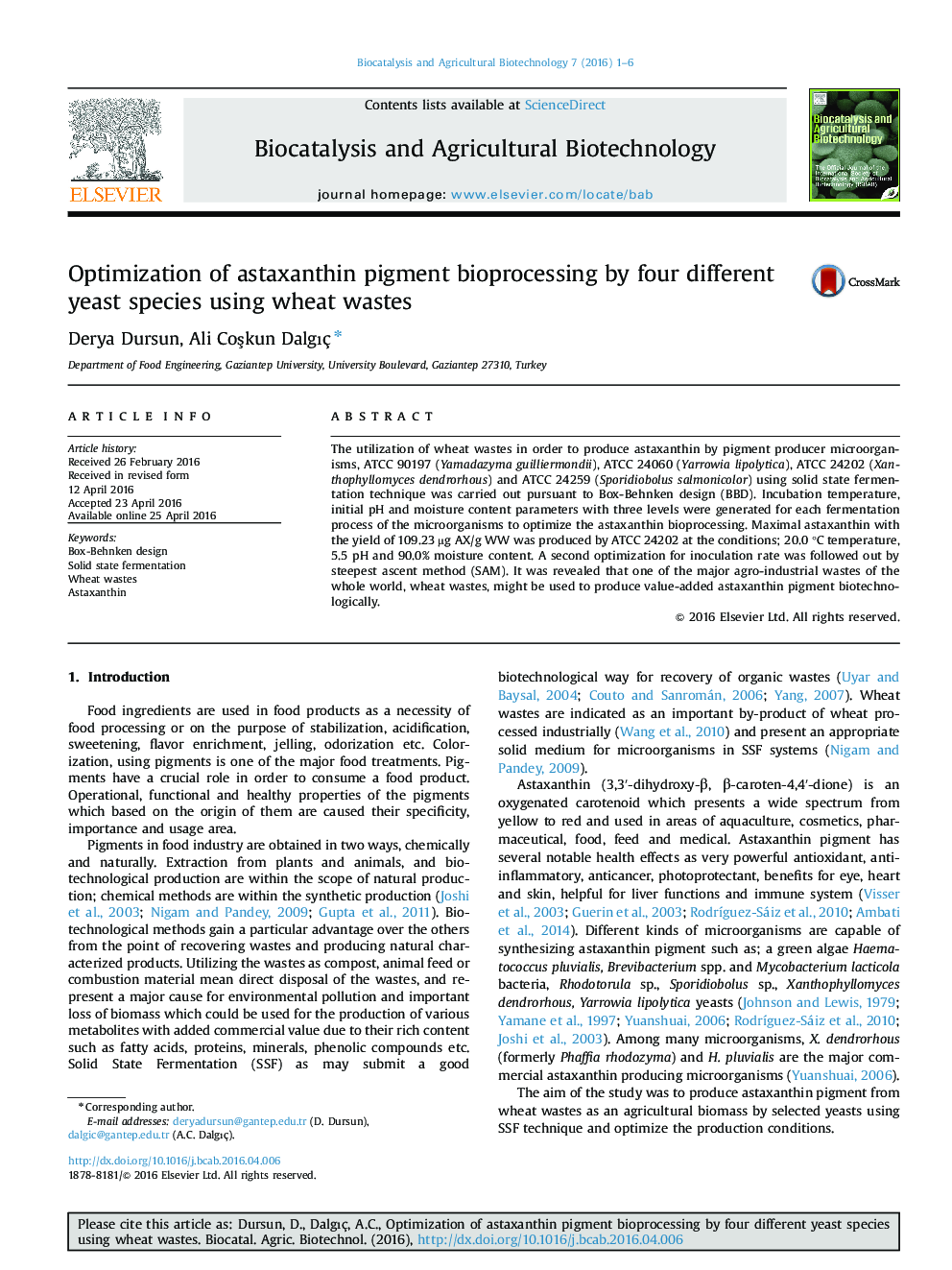| Article ID | Journal | Published Year | Pages | File Type |
|---|---|---|---|---|
| 2075611 | Biocatalysis and Agricultural Biotechnology | 2016 | 6 Pages |
The utilization of wheat wastes in order to produce astaxanthin by pigment producer microorganisms, ATCC 90197 (Yamadazyma guilliermondii), ATCC 24060 (Yarrowia lipolytica), ATCC 24202 (Xanthophyllomyces dendrorhous) and ATCC 24259 (Sporidiobolus salmonicolor) using solid state fermentation technique was carried out pursuant to Box-Behnken design (BBD). Incubation temperature, initial pH and moisture content parameters with three levels were generated for each fermentation process of the microorganisms to optimize the astaxanthin bioprocessing. Maximal astaxanthin with the yield of 109.23 µg AX/g WW was produced by ATCC 24202 at the conditions; 20.0 °C temperature, 5.5 pH and 90.0% moisture content. A second optimization for inoculation rate was followed out by steepest ascent method (SAM). It was revealed that one of the major agro-industrial wastes of the whole world, wheat wastes, might be used to produce value-added astaxanthin pigment biotechnologically.
